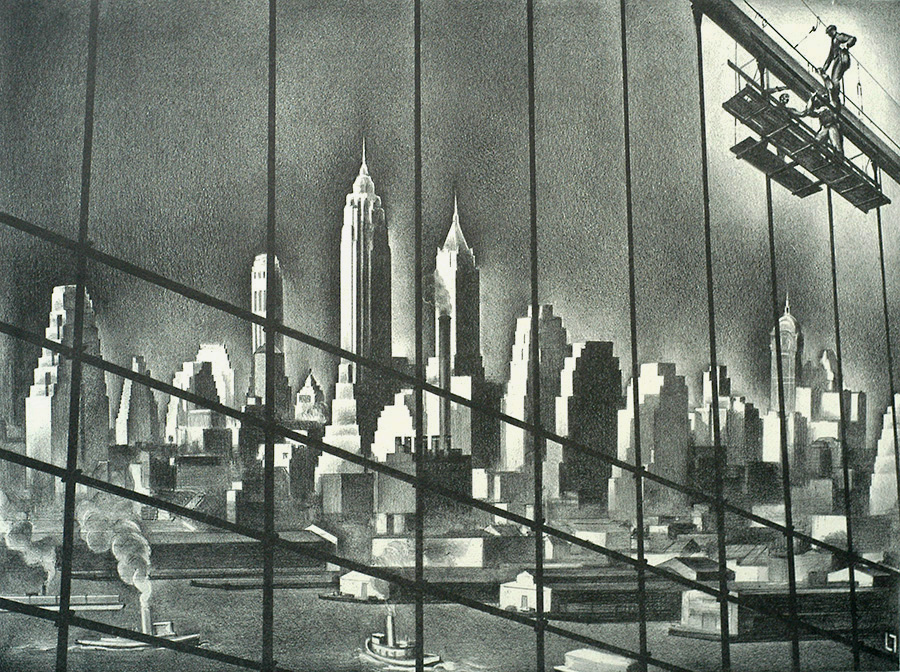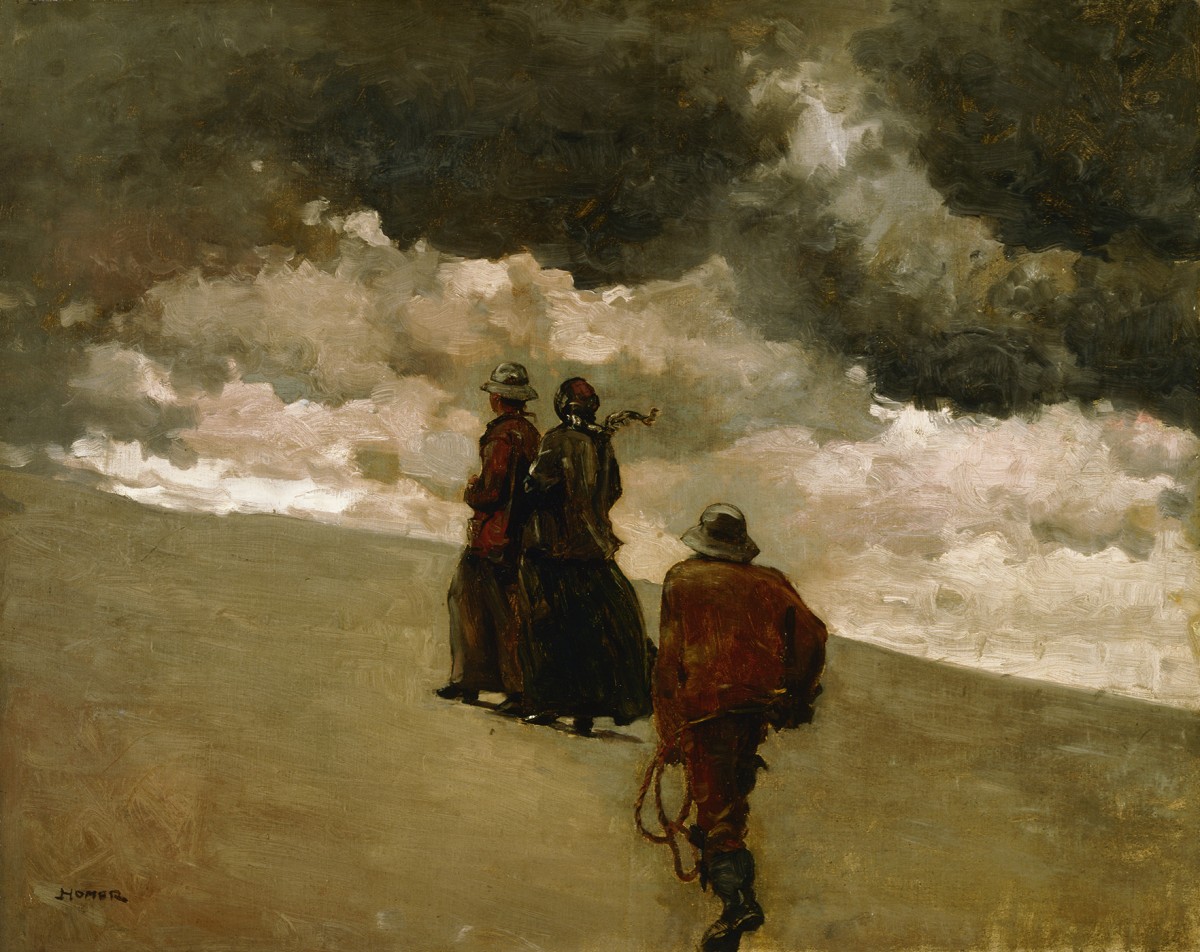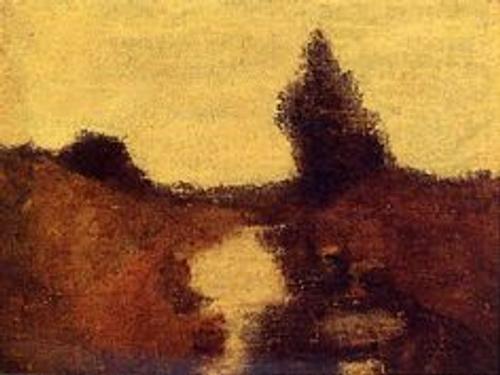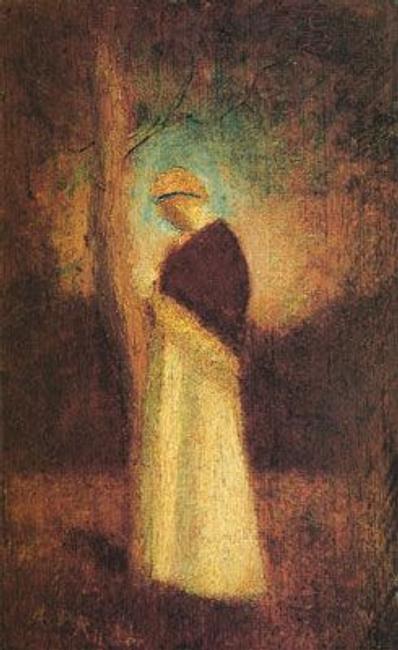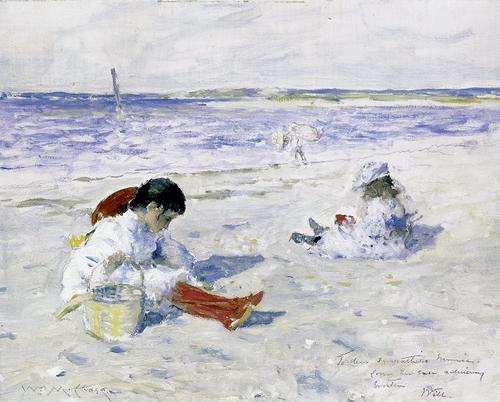National Gallery of Art, WashingtonMarch 1 – July 5, 2020
![]() The Orchestra of the Opéra, 1870. Oil on canvas. Overall: 56.6 x 46 cm (22 5/16 x 18 1/8 in.) framed: 78 x 69 cm (30 11/16 x 27 3/16 in.) Musée d'Orsay, Paris, RF 2417 Copyright RMN-Grand Palais / photo: Hervé Lewandowski / Art Resource, NY.
The Orchestra of the Opéra, 1870. Oil on canvas. Overall: 56.6 x 46 cm (22 5/16 x 18 1/8 in.) framed: 78 x 69 cm (30 11/16 x 27 3/16 in.) Musée d'Orsay, Paris, RF 2417 Copyright RMN-Grand Palais / photo: Hervé Lewandowski / Art Resource, NY.
![]()
Edgar Degas,
The Curtain, c. 1880, pastel over charcoal and monotype on laid paper mounted on board, sheet: 29 x 33.3 cm (11 7/16 x 13 1/8 in.), National Gallery of Art, Washington, Collection of Mr. and Mrs. Paul Mellon
An exuberant display of fecund imagination and keen observation, Edgar Degas’s renowned images of the Paris Opéra are among the most sophisticated and visually compelling works he ever created. Celebrating the 350th anniversary of the Opéra’s founding, Degas at the Opéra will present approximately 100 of the artist’s best-known and beloved works in a range of media, including paintings, pastels, drawings, prints, and sculpture. It will be accompanied by a fully illustrated exhibition catalog.
Degas (1834–1917) is celebrated as
the painter of dancers, a subject that dominated his art for nearly four decades. Although there have been many exhibitions celebrating his love of the ballet, this will be the first to consider his enduring fascination with the opéra. A music lover and regular visitor to performances, Degas explored both the public spaces of the Paris Opéra—auditorium, stage, and boxes—as well as more private ones, including dance studios and backstage. He was friends with many of the people he depicted in his paintings, from dancers, singers, and orchestra musicians to the dark-suited subscribers.
The exhibition is curated by Degas expert Henri Loyrette with Kimberly A. Jones, curator of 19th-century French paintings, National Gallery of Art; Leïla Jarbouai, graphic arts curator, Musée d'Orsay; and Marine Kisiel, curator, Musée d'Orsay.
Organization: Organized by the National Gallery of Art, Washington, and the Musées d'Orsay et de l'Orangerie, Paris
About the Exhibition
Degas at the Opéra is the first exhibition to examine the importance of the Paris Opéra to the artist's work. The exhibition addresses the Opéra as an institution and Degas's passionate attachment to it through his personal relationships with successive Opéra directors, composers, corps de ballet, singers, musicians, conductors, and subscribers. From the mid-1860s through his later work made after 1900, the Opéra was the focal point for the artist. He explored its different spaces (orchestra, stage, boxes, foyer, corridors, dance studios), and examined the people active in those spaces. Degas's depiction of the dancer's body from every angle, under strain or in moments of relaxed waiting, reveals the psychological truth of the moment and is remarkable for its modernity in representing the human figure.
Degas used multiple viewpoints to frame a scene in unexpected ways. Through the contrasts of lighting, the juxtaposition of the darkened orchestra pit and the brightly lit stage, the study of movement, and the spontaneous gestures that masked patient study and constant practice, the Opéra became a laboratory that allowed him to explore the constant interplay of form and substance.
Rejecting the idea of painting from nature, Degas presented an Opéra filtered by memory and enriched by his imagination. He invents the scenes of orchestras, views of the auditorium, the stage and behind the scenes, dance classes, and examinations in the studio. Each scene and subject called for its own medium: paint for the slow precision of the dance classes; pastel for the dazzling colored ballets; black-and-white monotypes for the amorous liaisons behind the scenes; and drawing for the dancers' fleeting poses or movements.
Arranged thematically in eight galleries, Degas at the Opéra opens with his most famous works inspired by the Opéra: Mlle Fiocre a propos of the Ballet "La Source," (c. 1867–1868, Brooklyn Museum) and The Ballet from "Robert le Diable" (1871, The Metropolitan Museum of Art). Although they depict specific operatic performances, these paintings speak directly to Degas's profound attachment to and engagement with the Opéra as well as his distinctive approach to its presentation.
Degas also depicted his circle of friends, the performers, musicians, and others who were associated with the Opéra, including the portraits of soprano Rose Caron and cellist Louis-Marie Pilet, in addition to drawings of writer and librettist Ludovic Halévy. Among the highlights of Degas's musical circle is his portrayal of bassoonist Désiré Dihau that appears in his extraordinary and unconventional painting, The Orchestra of the Opera (c. 1870, Musée d'Orsay), as well as in Musicians in the Orchestra (Portrait of Désiré Dihau) (c. 1870, Fine Arts Museums of San Francisco).
The exhibition continues with works that illustrate Degas's interest in representing performers in candid moments in rehearsal rooms, offering rare glimpses into the backstage life and the rigorous training of the dancers. Several of the works on view are set in the practice rooms of the Opéra house on the rue Le Peletier—destroyed by fire in 1873—including The Dance Class (1873, Musée d'Orsay) and The Dance Class (c. 1873, National Gallery of Art).
While Degas showed little interest in documenting actual performances, he was intrigued by the public spaces of the Opera. He produced works that incorporate unconventional viewpoints into and out of the backstage wings, looking down at the stage from the opera boxes, or up from in the orchestra pit. Among the works on view that show such dynamic representations are Yellow Dancers (In the Wings) (1847/1876, The Art Institute of Chicago), The Curtain (c. 1880, National Gallery of Art), and Dancer with a Bouquet Curtseying on Stage (1878, Musée d'Orsay).
The Paris Opéra not only supplied a variety of subject matter for Degas to explore, but it also fueled his passion for experimenting with materials and format. Degas created decorative fans beginning in the late 1860s, using the semicircular format to explore compositional space in increasingly complex ways. Eight of these fans are on view, including Dancers (1879, Tacoma Art Museum), Ballet (c. 1880, Musée d'Orsay), and La Farandole (c. 1870, private collection). He took these experiments even further in a series of panoramic frieze paintings begun in the late 1870s. Among the six frieze paintings featured in this exhibition are Dancers in the Rehearsal Room with a Double Bass (c. 1882–1885, The Metropolitan Museum of Art), Dancers in the Green Room (c. 1879, Detroit Institute of Arts), and Dancers in the Classroom (c. 1880, Sterling and Francine Clark Art Institute).
The body of the dancer captured both in motion and at rest was a source of fascination and inspiration for Degas. Several drawings on view will show that while many served as studies for other works, it was the process of creation itself that motivated him. Some highlights on view are Three Nude Dancers (c. 1903, Arkansas Arts Center Foundation Collection) and Three Dancers (1900–1905, private collection) that depict dancers in motion, while other works, such as Dancer, Half-Length, Arms Crossed Behind her Head (c. 1890, Statens Museum fur Kunst) and Study of a Dancer (1874, private collection), show dancers in a specific pose.
Degas provided rare insights into the life of performers behind the scenes, especially that of the ballet "rat," as young dance students were known, and investigates both the humor and the seriousness of the difficult and demanding life of the ballet dancer. A bound volume of etchings, La Famille Cardinal (1938/1939, National Gallery of Art), as well as a series of monotypes, both of which are based on La Famille Cardinal, a study of lower-class Parisian life during the early years of the French government's Third Republic (1870–1940), written by Halévy. Degas's most famous work on the theme of the dancer in training, the wax sculpture, Little Dancer Aged Fourteen (1878–1881, National Gallery of Art), will be installed, alongside a bound volume of pencil sketches depicting ballet dancers (c. 1877, The J. Paul Getty Museum).
Even as his eyesight failed later in life, Degas continued to draw inspiration from the Opéra. The exhibition concludes with his late works, many of them in pastel, in which Degas abandoned the precision of his early works. Later works such as Blue Dancers (c. 1890, Musée d'Orsay), Dancer with Bouquets (1895–1900, Chrysler Museum of Art), and Ballet Scene (c. 1907, National Gallery of Art) show the vibrant colors and bold silhouettes that he favored.
Edgar Degas (1834–1917)
The eldest son of a Parisian banker, Degas reinforced his formal academic art training at the École des Beaux-Arts by copying old master paintings both in Italy, where he spent three years (1856–1859), and at the Musée du Louvre. Degas developed a rigorous drawing style and a respect for line early on that he would maintain throughout his career. His first independent works were portraits and history paintings, but in the early 1860s he began to paint scenes from modern life, starting with the world of horse racing. By the end of the 1860s, he turned his attention to the theater and ballet.
In 1873 Degas joined other artists who were organizing independent exhibitions without juries. He became a founding member of the group that would be known as the impressionists, participating in six impressionist exhibitions between 1874 and 1886.
Despite his long and fruitful association with the impressionists, Degas considered himself a realist. His focus on urban subjects, artificial light, and careful drawing distinguished him from other impressionists, who worked outdoors and painted directly from their subjects. An observer of everyday scenes, Degas tirelessly analyzed positions, gestures, and movement.
Degas developed distinctive compositional techniques, viewing scenes from unexpected angles and framing them unconventionally. He experimented with a variety of media, including pastels, photography, and monotypes, and used novel combinations of materials in works on paper and canvas as well as sculptures.
Degas was often criticized for depicting unattractive models from Paris's working class, but a few writers, like realist novelist Edmond de Goncourt, championed Degas as "the one who has been able to capture the soul of modern life." By the late 1880s Degas was recognized as a major figure in the Paris art world. Financially secure, he could be selective about exhibiting and selling his work. He also bought ancient and modern works for his own collection, including paintings by El Greco, Édouard Manet, and Paul Gauguin. Depressed by the limitations of his failing eyesight, he created nothing after 1912; when he died in 1917, he was hailed as a French national treasure. After his death, deteriorating sculptures whose existence had been unknown to all but his closest associates were found in his studio: 74 of them were cast in bronze over the next decades, and of the 70 that survived the process, 52 came to the National Gallery of Art as gifts of Mr. and Mrs. Paul Mellon, including Little Dancer Aged Fourteen.
Exhibition Film
A 2019 documentary about Degas and the Opéra, made in conjunction with the Musée d’Orsay’s presentation of the exhibition and including footage of dancers from the Paris Opéra Ballet, will screen continuously in the West Building Lecture Hall. The file is directed by Blandine Armand and Vincent Trisolini and produced by Gilles Berthaut. Courtesy Les Bons Clients, Arte France, Musée d’Orsay, Opéra National de Paris (total running time: 51 minutes, 27 seconds)
Exhibition Catalog
![]()
Co-published by the Musée d'Orsay and the Musée de l'Orangerie / Réunion des musées nationaux,
this beautifully illustrated, 323-page book presents a comprehensive exploration of Degas's fascination with the Paris Opéra. In inclusive scholarly essays and breathtaking illustrations, Degas expert Henri Loyrette, general curator of the exhibition, with Kimberly A. Jones, curator of 19th-century French paintings, National Gallery of Art; Leïla Jarbouai, graphic arts curator, Musée d'Orsay; and Marine Kisiel, curator, Musée d'Orsay, consider the Opéra as a whole, examining not only Degas's passionate relationship with it and his musical tastes, but also the infinite resources it provided him.
![]() The Devonshire collection of Old Master drawings is one of the finest private drawings collections in the world. Spanning 300 years, these unparalleled works represent some of the true masters of their craft, including Carpaccio, Poussin, Rembrandt, Rubens, Van Dyck and more.
The Devonshire collection of Old Master drawings is one of the finest private drawings collections in the world. Spanning 300 years, these unparalleled works represent some of the true masters of their craft, including Carpaccio, Poussin, Rembrandt, Rubens, Van Dyck and more.![]() Alessandro Bonvicino, called Moretto da Brescia, A woman’s head with braided hair, 16th century © The Devonshire Collections, Reproduced by kind permission of Chatsworth Settlement Trustees
Alessandro Bonvicino, called Moretto da Brescia, A woman’s head with braided hair, 16th century © The Devonshire Collections, Reproduced by kind permission of Chatsworth Settlement Trustees ![]() Claude Lorrain, Wooded landscape with Diana and Callisto, circa 1665 © The Devonshire Collections, Reproduced by kind permission of Chatsworth Settlement Trustees
Claude Lorrain, Wooded landscape with Diana and Callisto, circa 1665 © The Devonshire Collections, Reproduced by kind permission of Chatsworth Settlement Trustees ![]() Federico Zuccaro, Head and shoulders of a bearded man wearing a cap, possibly a self-portrait, 16th–17th Century © The Devonshire Collections, Reproduced by kind permission of Chatsworth Settlement Trustees
Federico Zuccaro, Head and shoulders of a bearded man wearing a cap, possibly a self-portrait, 16th–17th Century © The Devonshire Collections, Reproduced by kind permission of Chatsworth Settlement Trustees 
 Alessandro Bonvicino, called Moretto da Brescia, A woman’s head with braided hair, 16th century © The Devonshire Collections, Reproduced by kind permission of Chatsworth Settlement Trustees
Alessandro Bonvicino, called Moretto da Brescia, A woman’s head with braided hair, 16th century © The Devonshire Collections, Reproduced by kind permission of Chatsworth Settlement Trustees  Claude Lorrain, Wooded landscape with Diana and Callisto, circa 1665 © The Devonshire Collections, Reproduced by kind permission of Chatsworth Settlement Trustees
Claude Lorrain, Wooded landscape with Diana and Callisto, circa 1665 © The Devonshire Collections, Reproduced by kind permission of Chatsworth Settlement Trustees  Federico Zuccaro, Head and shoulders of a bearded man wearing a cap, possibly a self-portrait, 16th–17th Century © The Devonshire Collections, Reproduced by kind permission of Chatsworth Settlement Trustees
Federico Zuccaro, Head and shoulders of a bearded man wearing a cap, possibly a self-portrait, 16th–17th Century © The Devonshire Collections, Reproduced by kind permission of Chatsworth Settlement Trustees 
















